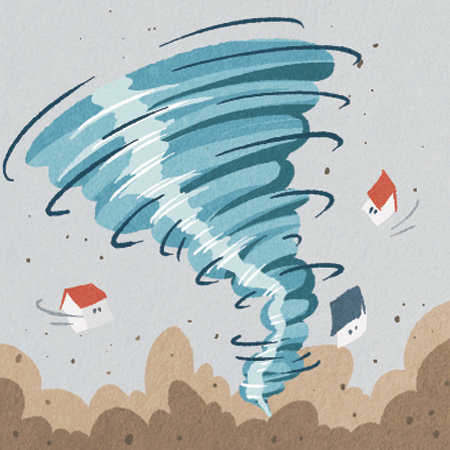Typhoons are changing
Typhoons are changing
Posted September. 05, 2020 07:25,
Updated September. 05, 2020 07:25


As Typhoon Haishen is likely to hit South Korea, followed by Typhoon Bavi and Typhoon Maysak, unusual typhoons breaking the normal conditions are emerging.
Typhoons are indispensable for the Earth to resolve energy imbalance. As the globular shape of the Earth receives energy from the Sun, it inevitably leads to energy imbalance, which is resolved by typhoons. Typhoons are produced in the ocean near the equator that received more energy than the rest of the globe due to its high elevation angle. Once produced, typhoons absorb the steam from the ocean maintaining its power and resolve energy imbalance between low altitudes and high altitudes by moving to high altitudes.
For typhoons to be produced, the following three conditions must be met: first, waters with a temperature of 27 degrees Celsius or higher; second, enough steam in the middle atmosphere; and third, the vorticity of the air in the low atmosphere. Typhoon Bavi was created without meeting the second and the third conditions. When it was first formed in the eastern ocean of Taiwan whose temperature was over 30 degrees Celsius, meeting the first condition. However, there wasn’t enough steam in the middle atmosphere nor the vorticity of the air in the low atmosphere. This is why the typhoon is nicknamed the “self-made typhoon” in the meteorology circles.
The location and growth cycles of Typhoon Bavi are also unusual. Typhoons that used to be produced in the latitude five to 10 degrees north near the equator are now formed in the latitude 15 degrees north as a result of global warming. Typhoons formed in this latitude take about 10 days to reach South Korea, giving enough time to prepare in advance based on predictions for their paths and power. However, Typhoon Bavi, which was created in the eastern ocean of Taiwan in the latitude 23.5 degrees north, reached South Korea in just four days, having the usual 10-day cycle of Typhoons. The typhoon heading powerfully to the Korean Peninsula was forecasted to have a central wind speed of 40 meters per second and a maximum instantaneous wind speed of 60 meters per second, which were higher than Typhoon Rusa and Typhoon Maemi with devastating impact on the country. However, it disappeared like a mirage after arriving in the Korean Peninsula without causing much damage.
In 2020, South Korea experienced the longest rainy season in recorded history, followed by unusual Typhoon Bavi and Typhoon Maysak. More research is needed to find out whether this summer was an exception or the beginning of the evolution of typhoons or large-scale climate change. I hope it is not the case of typhoons’ evolution for South Korea and the entire globe.







